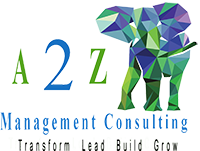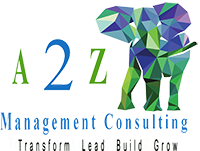This isn’t just daydreaming (although a little daydreaming never hurt anyone). It’s about really getting into the nitty-gritty details of what your ideal life would look like. Identifying and amplifying existing strengths is a big deal in solution-focused therapy. It’s like turning up the volume on all the awesome things you’re already doing.
Why Do I Only Have Social Anxiety With People I Know?
- Here, the practitioner encourages clients to build on previous successes by gently suggesting small, actionable steps.
- This isn’t just daydreaming (although a little daydreaming never hurt anyone).
- These therapies consistently show better outcomes for patients across various mental health conditions.
- This quick turnaround can enhance clients’ motivation and commitment to therapy, making it a more engaging and positive experience.
While many people find great success with Solution-Focused Therapy, others may benefit more from different approaches. Even the most persistent problems have moments when they’re less severe or absent altogether. Solution-Focused therapists are like detectives, helping you uncover these “exception” times. This is the essence of the Miracle Question, a powerful technique used in Solution-Focused Therapy. By envisioning this ideal scenario, you can start to identify concrete steps to make it a reality. Jeff Kori is a dynamic voice in the world of mental health blogging contributing to various publishers online.
In Solution-Focused Therapy, compliments aren’t just niceties – they’re a strategic tool. By highlighting your strengths and successes, therapists help reinforce positive behaviors and boost your confidence. One of the coolest things about Solution-Focused Therapy is its unwavering belief in your inner resources and strengths. It’s like having a therapist who’s convinced you’re secretly a superhero – and their job is to help you discover your powers. This approach is a far cry from the stereotype of a therapist nodding sagely while asking, “And how does that make you feel? ” Instead, Solution-Focused therapists are more like cheerleaders, coaches, and collaborators all rolled into one.
Future-oriented questioning is another core aspect of SFT, guiding clients to envision positive changes and the steps needed to achieve them. Scaling questions also empower clients to take ownership of their current situation. Regularly assessing their progress helps clients identify positive changes and recognize the efforts contributing to their success. This technique not only fosters a sense of accountability but also enhances the overall therapeutic process by making progress tangible and measurable.
It serves as a tangible tool that reminds clients of their journey and their commitment to change. The therapist encourages the client to discuss parts of their life unrelated to their problem. This exercise helps the client shift their focus away from the situation, fostering a more positive mindset and enhancing their resilience.
Scaling also helps to break down larger goals into more manageable steps, which can be more motivating and less overwhelming. As clients observe their scores rising, they feel encouraged to keep making strides toward their desired outcomes. Additionally, the miracle question opens the door to setting clear and specific goals. By asking the client what would be different in their life after the miracle, the therapist helps them pinpoint the exact changes they would like to see, which makes goal-setting more tangible and actionable. By identifying resources, strengths, and exceptions, you and your therapist work together to help you create your desired future. Miracle questioning is a common technique in solution-focused therapy, according to a 2021 study.
Common Techniques and Impact of Solution-focused Therapy
This approach resonates with ambitious business people and working-class professionals who are seeking practical strategies to overcome obstacles and drive success in their careers. By emphasizing actionable techniques and strategies, Solution-Focused Therapy provides a valuable framework for individuals looking to make tangible improvements in their lives. Solution-Focused Therapy is an innovative approach that aims to help individuals overcome challenges and achieve their goals by focusing on solutions rather than dwelling on problems. It is a brief, goal-oriented therapy that empowers clients to envision their desired future and discover practical strategies to move towards it.
- In family therapy contexts, solution-focused techniques help families collaboratively identify and work towards their unique goals in marital and family therapy.
- It’s about recognizing your strengths, envisioning a brighter future, and taking concrete steps to make that vision a reality.
- Here, we will examine eight powerful solution-focused therapy techniques that can guide you toward lasting change.
- Many therapists find that integrating solution-focused techniques with other therapeutic modalities can be incredibly effective.
He explained that his wife suggested that he speak to someone after he told her about the difficulties he was experiencing. John reported that he drinks alcohol infrequently, drinking two to three drinks per month. Overall, John indicated that he is in good health and has a healthy support network of his family and friends. John is a 35-year-old male who has been struggling with feelings of hopelessness and low self-esteem since his recent divorce.
Group Therapy Check-In Questions: Enhancing Connection and Progress
Regularly revisiting and adjusting goals based on clients’ progress ensures that the therapy remains relevant and effective. This dynamic and flexible approach allows therapists to tailor their interventions to meet the unique needs of each client. Therapists should focus on fostering a positive and supportive atmosphere, encouraging clients to identify and leverage their strengths.
Final Thoughts On Creating a Solution-Focused Treatment Plan
If you are interested in learning more about the flexible and empowering mental health treatment approach, we encourage you to explore available training education opportunities in your respective field. This can include trainings, workshops, continuing education credits, and supervision. The presenting section of your treatment plan gives you an opportunity to include your case conceptualization for the case.
This helps build confidence and reinforces the idea that change is possible. Furthermore, by recalling past successes, clients gain insights into the strategies and behaviors that helped them overcome difficulties before. These moments give valuable information that can be applied to current challenges, offering a practical way to tackle ongoing issues and keep moving forward. You and your therapist can use scaling questions to identify, observe, and detail exceptions. The miracle question may also involve a mental rehearsal of your desired future by asking you detailed descriptions of how your life would be once you achieve your goals.
In the 1980s, Berg was invited to speak and give workshops on the technique in Hong Kong. The treatment received attention and study, and soon after reached Mainland China. John indicated that he frequently gets lost in his thoughts where he is focusing on what went wrong in solution focused therapy interventions his marriage, and what he feels he should have done differently. Since the ending of this marriage, he has been thinking that he will not be able to find happiness again.
The therapist and client collaborate to set clear and achievable goals that are centered around positive change. Therapy does not focus on exploring the past or analyzing deep psychological issues. Instead, it aims to move the client forward toward solutions by exploring their desired future and the steps they can take to achieve it. The primary aim of SFT is to help clients identify and amplify their strengths, resources, and successes to solve current issues. Therapists maintain a positive and hopeful outlook, focusing on what’s working rather than what’s not.
Find a Therapist
Therapists affirm and validate clients’ achievements, abilities, and efforts. This boosts their self-esteem, resilience, and belief in managing their problems. Trepper, T. S., McCollum, E. E., De Jong, P., Korman, H., Gingerich, W., & Franklin, C. In Solution-Focused Therapy, the relationship between therapist and client is more of a partnership than a hierarchical doctor-patient dynamic. Solution-Focused Therapy is like the cool, optimistic cousin of traditional psychotherapy.
Treatments
If you are looking to experience the benefits of solution-focused therapy, the team at Symmetry Counseling can help. Our expert clinicians specialize in guiding individuals ages 10 to adults through solution-based therapy to address challenges and achieve meaningful goals. Contact us today to schedule an appointment and begin your journey toward a better tomorrow. Through focused discussions, clients set specific, measurable, and realistic goals that align with their values and desires. This technique brings clarity and direction to therapy, making it a point that clients are working toward a future they truly want.
Constructivism posits that people are meaning makers and are ultimately the creators of their own realities. Because someone creates their own reality, they may as well change for the better. Unlike many traditional forms of psychotherapy, SFBT is not based on any single theory and doesn’t focus on a client’s past. Solution-Focused Therapy can be beneficial for individuals of all ages and backgrounds. It is a flexible approach that can be adapted to various therapeutic settings and client needs. However, it may not be the most suitable choice for individuals requiring long-term or in-depth exploration of underlying issues.

